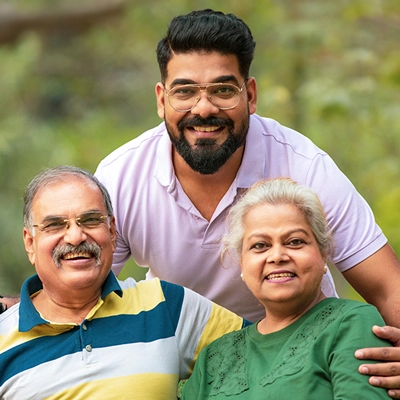
Early diagnosis can save lives
Know the signs today
Cardiovascular Disease in India
According to the WHO, cardiovascular disease is the leading cause of death in India, accounting for 28% of all deaths. Diagnosing a heart attack is crucial for timely treatment and preventing long-term complications.
Symptoms of Heart Attack
This can vary from person to person. Some common symptoms include chest pain, discomfort, or pressure that may spread to the shoulders, arms, neck, jaw, or back. Other symptoms include shortness of breath, nausea, vomiting, sweating, dizziness, and fatigue. However, not all heart attacks come upfront with the classic symptoms, especially in women, older adults, and people with diabetes. Therefore, any unexplained symptoms should not be ignored, and prompt medical attention should be sought.
Diagnosis is the key
The diagnosis of a heart attack is based on a combination of clinical symptoms, electrocardiogram (ECG) findings, and blood tests. The goal of diagnosis is to identify the presence of a blockage in the coronary artery, which supplies blood to the heart muscle. The sooner the diagnosis is made, the sooner treatment can be initiated, saving the heart muscle and preventing complications.
How Can a Heart Attack be Diagnosed?
In addition, various non-governmental organizations (NGOs) and community-based organizations (CBOs) are working to raise awareness about CVDs and provide screening and referral services to underserved communities.
Frequently Asked Questions
What are the common symptoms of a heart attack?
Chest pain or discomfort, shortness of breath, pain or discomfort in the arms, neck, jaw, shoulder, or back, and sweating are the most common symptoms of a heart attack. It’s essential to note that everyone experiences all of these symptoms, and some people may not have any symptoms at all.
How is a heart attack diagnosed?
A heart attack is typically diagnosed through a combination of medical history, physical examination, and diagnostic tests. These tests include an electrocardiogram (ECG), blood tests to check enzymes released by the heart during a heart attack, and imaging tests such as a coronary angiogram or echocardiogram.
Can a heart attack be diagnosed before symptoms appear?
In some cases, a heart attack may be diagnosed before symptoms appear, particularly in people with a considerable risk of developing heart disease. It may be done through screening tests such as a stress test or coronary calcium scan.
What is the difference between a heart attack and cardiac arrest?
A heart attack occurs when a blockage in coronary arteries causes obstruction while supplying blood to the heart, while cardiac arrest occurs when the heart suddenly stops beating. While a heart attack can lead to cardiac arrest, they are two medical emergencies requiring different treatments.
What to do if I suspect I have a heart attack?
If you suspect you have a heart attack, it’s essential to seek emergency medical attention immediately. Call your local emergency number 112 or visit the nearest hospital emergency department. Do not try to drive yourself to the hospital or wait to see if your symptoms improve on their own.
How can I reduce my risk of having a heart attack?
There are several steps to reduce your risk of having a heart attack, including maintaining a healthy diet and weight, engaging in regular physical activity, not smoking, managing stress, and getting regular check-ups with your healthcare provider. Additionally, if you have high blood pressure, high cholesterol, or diabetes, managing these conditions with medication and lifestyle changes are essential.
Subscribe to Platinum For Heart Newsletter
Sign up now and get free access to our monthly newsletter on Heart health & More
Sources
1. World Health Organization India: https://www.who.int/india/health-topics/cardiovascular-diseases
2. Indian Heart Association: https://indianheartassociation.org/
3. Indian Journal of Medical Research: https://www.ncbi.nlm.nih.gov/pmc/articles/PMC4128187/
4. Ministry of Health and Family Welfare, Government of India: https://www.mohfw.gov.in/
5. Mayo Clinic https://www.mayoclinic.org/diseases-conditions/heart-attack/symptoms-causes/syc-20373106
6. National Institutes of Health https://www.nhlbi.nih.gov/health/heart-attack/diagnosis
Disclaimer: The information presented by Boston Scientific Corporation is for educational purposes only and does not recommend self-management of health issues. The information should not be treated as comprehensive and does not intend to provide diagnosis, treatment or any medical advice. Individual results may vary and hence, it is advisable to consult your doctor regarding any medical or health related diagnosis or treatment options.
IC-1601203AA-0523

